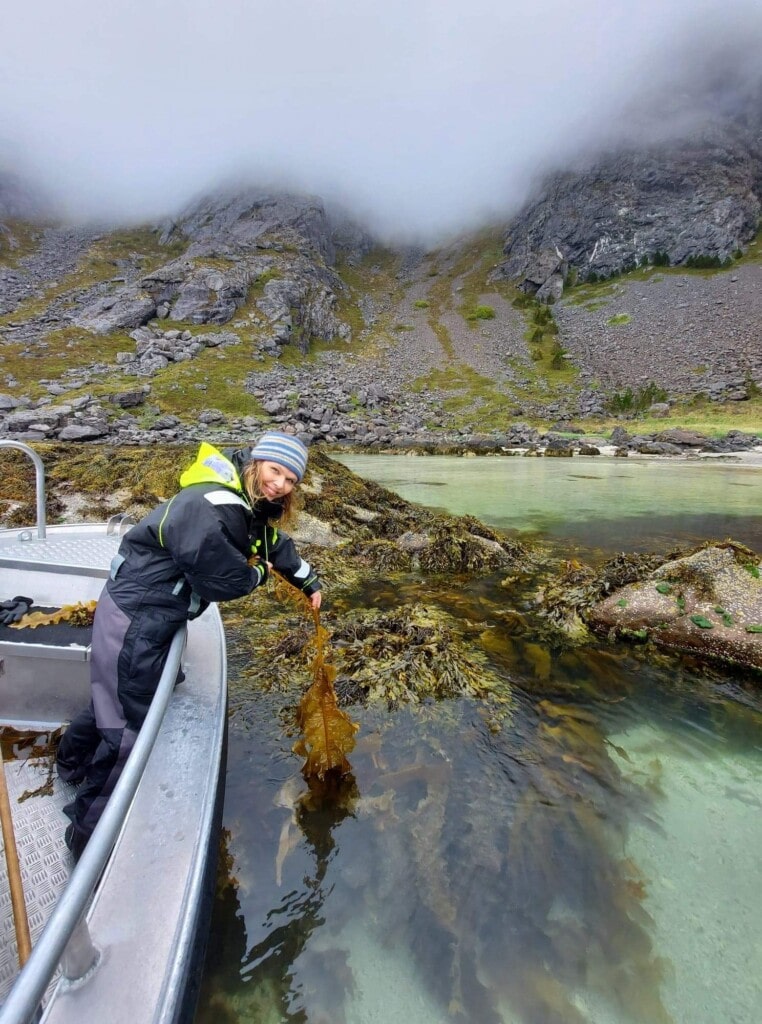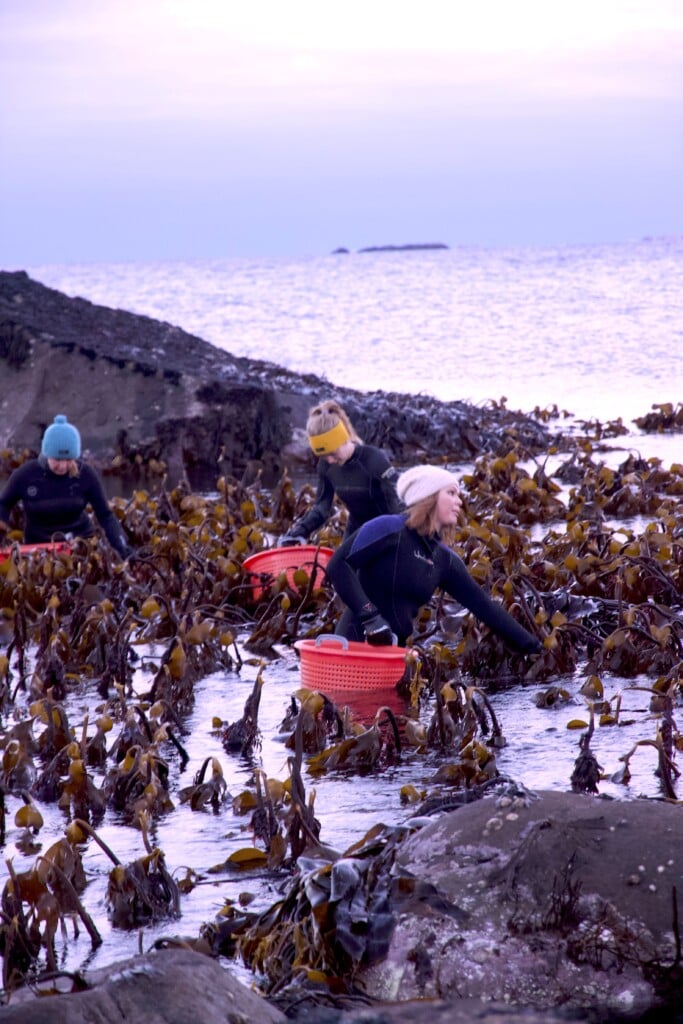Taking a fair share: Sustainable harvesting at Lofoten Seaweed
Table of Contents

Seaweed and climate change
It’s no secret that we love seaweed – we talk about it all the time! As well as praising its amazing taste and health benefits, we love to shout about how great seaweed is for the environment. Seaweed uses photosynthesis to absorb CO2 from the atmosphere, trapping the carbon within its biomass. When the seaweed eventually dies and sinks to the bottom of the ocean, it takes the absorbed carbon with it, thereby removing it from the carbon cycle. This process is known as ‘carbon sequestration’, a concept which is at the forefront of the climate discussion.
There are many fantastic movements around the world that focus on planting trees to offset the over-abundance of CO2 in our atmosphere. Projects like OneMillionTrees, The Great Green Wall and The Bonn Challenge (as well as countless others) seek to slow or reverse climate change using natural methods – letting our arboreal friends do the work.
Trees are highly efficient at capturing carbon, but did you know that seaweed sequesters carbon at a higher rate than any terrestrial plant? The average square kilometre of seaweed can sequester an astonishing 1,000 metric tons of carbon each year. Seaweed is estimated to produce around 70% of the earth’s oxygen, and is one of the fastest growing organisms on Earth, with some species growing at a rate of 3 feet every day. Seaweed requires no arable land, pesticides, fertilisers or freshwater in order to grow, and it provides a habitat for anything from tiny shellfish right the way up to large invertebrates and mammals, like octopuses and otters.
One question we always get asked is: “If seaweed is so great for the environment, why are you taking it out of the ocean?” This is a great question, and provides the perfect opportunity for us to talk about our sustainable harvesting methods!

Sustainable harvesting techniques
Harvesting seaweed from the wild can be done in several different ways, and some are more environmentally friendly than others. Trawling is a destructive method which causes catastrophic damage from which kelp forests can take a long time to recover, not to mention the effect on the other organisms that call the kelp forests home. Foraging for seaweed that has been cast up naturally on the beach is a greener alternative, but it doesn’t guarantee the quality of the plant, which is important if you’re going to be eating it.
At Lofoten Seaweed we cut all of our seaweed by hand, making sure that the root system (or holdfast) is left in place, and that there is plenty of growth tissue (or meristem) remaining. We harvest during the peak of the growing season, by which point the seaweed has had plenty of time to reproduce and grow to a healthy length. Regrowth time varies a lot from species to species, which means that we have a full calendar during harvesting season!
If you’re interested in doing some sustainable harvesting yourself, this guide is a good place to start.
Monitoring and data collection
As well as techniques used during the harvest, we carry out several pre- and post-harvest activities to ensure that sustainable harvesting is achieved. We’ve been carefully monitoring and recording variables such as dates, exact locations and harvest volumes by species for the last three years in a central system.
By tracking harvest data we can estimate the rate of biomass recovery, meaning that we can easily avoid over-harvesting in any given area. We have a rotation system in place to ensure that each harvest patch has a chance to recover, but we’ve actually found that this is barely needed. Our results show that the regrowth in recently-harvested patches is actually faster than anticipated, almost as if a harvest actually stimulates growth!
As far as we’re aware, we are the only seaweed company in the world to be recording and tracking harvest data in this way. It’s a sustainable harvesting method that sets us apart, and we’re very excited to see what we can do with five, ten, even twenty years of data behind us.
Seaweed farms – the future of sustainable harvesting?
For now, 100% of our seaweed is wild-harvested. On occasion, if an order is exceptionally large, we will supplement our wild-harvested seaweed with organically farmed seaweed from Lofoten Blue Harvest. We are actually very much in favour of organic seaweed farms. In an ideal future, the demand for seaweed as a food product will be so high that organic seaweed farms will be required to meet the demand for this delicious ocean vegetable, and the only sustainable harvesting will be carried out by seaweed farmers and individual foragers.
The ocean covers 71% of our planet, but contributes only 2% of the world’s food supply (on a caloric basis). The UN predicts that by 2050, we will need to produce 50% more food than we do currently to sustain the Earth’s population, but current land-farming practices are not scalable. This is why we’re excited about the future of responsible marine agriculture – or aquaculture – as a means of feeding the world sustainably.
For now we will continue with sustainable harvesting by hand in Nappstraumen, taking good care of our seaweed – the food of the future.